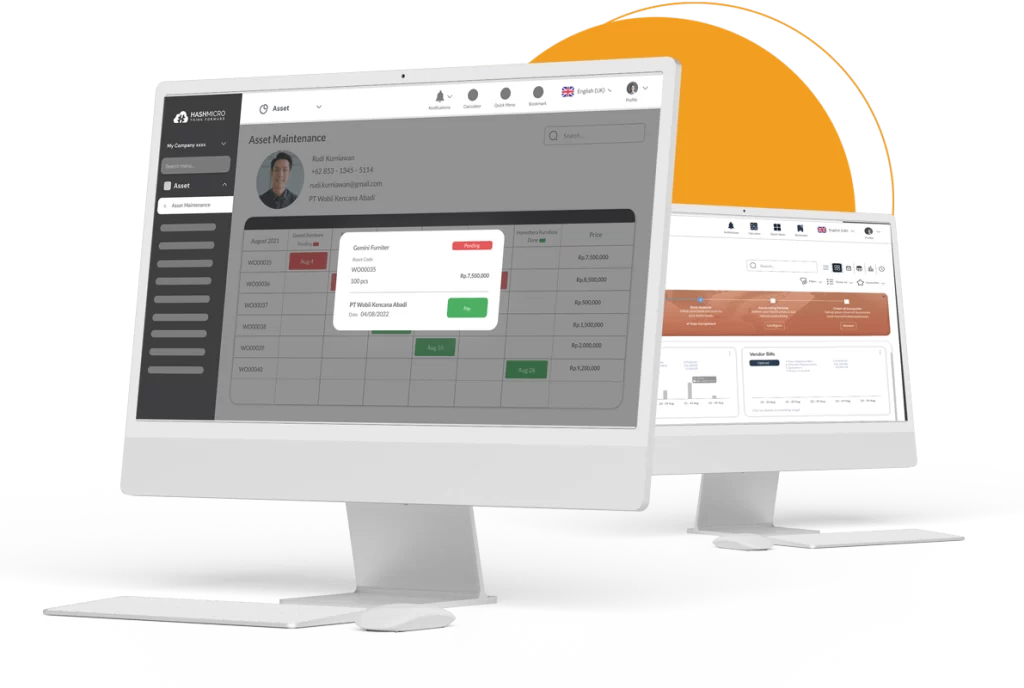Have you encountered missing equipment or sudden machinery breakdowns during crucial construction phases? These problems often lead to costly delays, project disruptions, and wasted resources. Construction companies frequently struggle to maintain asset visibility, causing profitability inefficiencies.
Effective construction asset management is the solution to overcoming these challenges and boosting project success. Businesses can stay ahead in a competitive market by optimizing equipment use and enhancing operational efficiency. Read on to explore how strategic asset management can transform your construction company!
Key Takeaways
|
Table of Contents

What is Construction Asset Management?

Effective asset management is crucial in the construction industry to maximize project efficiency and outcomes. It requires strategically utilizing essential assets like machinery and trucks, often supported by advanced ERP software. This approach ensures optimal performance and the avoidance of financial losses.
However, many companies face challenges in effectively implementing these strategies due to limited resources. Optimizing asset utilization is critical for enhancing the sustainability and profitability of the business. Strategic approaches can significantly improve asset management practices within the construction industry.
Objectives of Construction Asset Management
Asset management in construction is pivotal for streamlining operations and enhancing overall financial accuracy. It involves critical objectives that ensure assets are utilized effectively and responsibly within a company. This includes securing clear ownership and maintaining and enhancing asset values over time.
The list of core objectives also encompasses:
- Minimizing costs while extending the usable life of assets.
- Maximizing profits generated from each asset.
- Guiding the optimal use and utility of assets.
- Ensuring operational continuity through asset security.
- Providing precise data for financial reporting and balance sheets.
Together, these objectives promote a structured and effective approach to asset management in the construction industry, ensuring that every asset is leveraged to its fullest potential to contribute to the company’s profitability and sustainability.
5 Asset Management Strategies for Construction Company
Implementing asset management in construction isn’t just about tracking construction equipment; it requires strategic planning and informed decision-making. By focusing on key areas of asset management, companies can streamline operations and maximize profitability. Here are five essential strategies to help you get started:
1. Assembling a Winning Asset Management Team
Managing a construction business requires oversight of many aspects, which can overwhelm a single person. Assembling a skilled asset management team is crucial; small-scale operations may need only a few personnel, while larger companies require a comprehensive team proficient in modern asset inventory management practices and software.
2. Understanding Asset Lifespan and Depreciation
Awareness of your assets’ lifespan allows for better planning regarding replacements and acquisitions. It’s crucial not just to anticipate when assets will fail but also to actively manage their lifecycle through strategic purchases and depreciation accounting. This proactive approach ensures that investments are timed and beneficial.
3. Tracking and Enhancing Asset Profitability
Knowing the profitability ratio of each asset helps determine their contribution to the business. This insight allows informed decisions regarding asset retention, enhancement, or disposal. Implementing asset management systems to track and analyze profitability seamlessly.
4. Regular Asset Condition Evaluation
It’s advisable to conduct quarterly evaluations of all assets to identify and rectify issues early on. This can prevent extensive damages and prolong the assets’ life, ensuring continuous productivity and operational efficiency. Asset management software can automate these inspections and maintenance schedules.
5. Choosing the Right Asset Management Software
Selecting appropriate software is vital for the systematic management of construction assets. The software should align with your specific business needs and help in managing tasks such as depreciation, maintenance, and profitability analysis. HashMicro’s Asset Management Software offers customizable features that adapt to diverse construction business requirements.
HashMicro’s Asset Management Software to Boost Construction Companies Efficiency
 To enhance efficiency in construction businesses, HashMicro’s Asset Management Software offers features specifically designed to address industry challenges. This software streamlines asset tracking, automates processes, provides actionable insights, ensuring construction companies maximize their equipment’s potential and intergrates with construction management software.
To enhance efficiency in construction businesses, HashMicro’s Asset Management Software offers features specifically designed to address industry challenges. This software streamlines asset tracking, automates processes, provides actionable insights, ensuring construction companies maximize their equipment’s potential and intergrates with construction management software.
The key features include:
- Asset Comprehensive Cost Reporting: Get a complete overview of asset-related costs, enabling better budgeting and financial planning.
- Asset GPS Tracking: Monitor the real-time location of assets, ensuring security and proper utilization across various project sites.
- Repair Order Management – Integrated with Inventory: Manage repair orders efficiently while tracking spare parts inventory to prevent delays in maintenance.
- Fully Integrated with Accounting for Depreciation Tracking: Seamlessly tracks asset depreciation and integrates data with accounting systems for more accurate financial reporting.
- QR Code Scanning for Facility Requests: QR code scanning simplifies maintenance requests, allowing quick identification and servicing of assets.
These features help construction companies optimize asset management, reduce downtime, and increase overall efficiency, contributing to long-term profitability and success. If you’re still wondering about the best asset management software for your business, you can read more about it here.
Conclusion
Effective asset management is essential for construction companies to minimize costs and reduce equipment downtime. Businesses enhance efficiency by implementing strategies like assembling a skilled team and tracking asset lifespans. Regular evaluations and choosing the right asset management software ensure optimal asset utilization.
HashMicro’s Asset Management Software provides tailored solutions with real-time GPS tracking and integrated depreciation tracking features. It helps streamline operations by simplifying asset management and enhancing visibility for construction companies. Try HashMicro’s Asset Management Software with a free demo today!
Frequently Asked Question
-
What is construction asset management?
This involves tracking, maintaining, and optimizing assets like machinery and equipment. It helps minimize downtime, reduce costs, and improve project efficiency.
-
What is building asset management?
Building asset management focuses on maintaining and optimizing building-related assets, including HVAC, electrical systems, and facilities. It ensures equipment efficiency and safety and maximizes the building’s long-term value.
-
What are the 3 main asset management types?
The three main types are physical asset management, financial asset management, and infrastructure asset management. They cover managing equipment, investments, and public services to ensure operational and financial success.





































